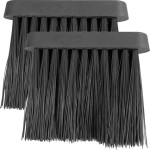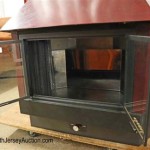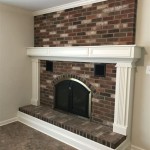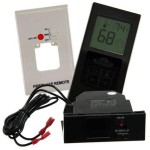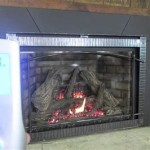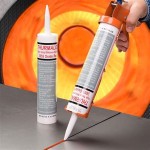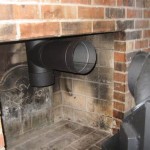Corner Non-Vented Gas Fireplaces: A Comprehensive Overview
Corner non-vented gas fireplaces offer a unique approach to heating and aesthetics within a living space. Unlike traditional fireplaces requiring a chimney or venting system, these units operate without the need for external exhaust. This characteristic makes them a versatile option for various installation locations, particularly in spaces where traditional venting is impractical or cost-prohibitive. Understanding the features, benefits, and considerations associated with corner non-vented gas fireplaces is crucial for making an informed purchasing decision.
These fireplaces are specifically designed to fit into the corner of a room, maximizing space utilization and creating a focal point. They are available in a wide range of styles, from contemporary to traditional, allowing homeowners to select a model that complements their existing decor. The fuel source is typically natural gas or propane, providing a consistent and controllable heat output. Because they lack a venting system, these fireplaces are designed with safety features to ensure proper combustion and minimize the risk of carbon monoxide buildup.
Space Optimization and Aesthetic Appeal
One of the primary advantages of corner non-vented gas fireplaces is their ability to optimize space utilization. Corners are often underutilized areas in a room, and these fireplaces provide a practical and visually appealing solution. By fitting snugly into the corner, they free up valuable wall space for furniture or other decorative elements. The fireplace itself becomes a design feature, adding warmth and ambiance to the room. The aesthetic appeal of these units is further enhanced by the variety of designs available. From sleek, modern models with clean lines to more rustic designs with realistic log sets, there is a style to suit virtually any taste.
The visual impact of a corner fireplace can significantly transform a room's atmosphere. The flickering flames and radiant heat create a cozy and inviting environment. Many models also offer adjustable flame height and heat output, allowing users to customize the ambiance to their preferences. Furthermore, the availability of different surround materials, such as stone, brick, or metal, allows for further customization to match the existing interior design scheme.
Installation Flexibility and Cost Considerations
The absence of venting requirements simplifies the installation process for corner non-vented gas fireplaces. Unlike traditional fireplaces that necessitate a chimney or extensive ductwork, these units can typically be installed with minimal structural modifications. This can significantly reduce installation costs and make them a more attractive option for homeowners looking to add a fireplace without undertaking a major renovation project. However, it's crucial to consult with a qualified professional to ensure proper installation and adherence to local building codes.
While the installation costs are generally lower, it is important to factor in the ongoing operational costs. The price of natural gas or propane can fluctuate, impacting the overall cost of heating. Additionally, non-vented gas fireplaces are often less energy-efficient than vented models, as some of the heat generated is lost during the combustion process. Evaluating the long-term operational costs alongside the initial installation expenses is essential for determining the overall cost-effectiveness of the fireplace.
Safety Features and Operational Requirements
Given the absence of a venting system, safety is paramount in the design and operation of corner non-vented gas fireplaces. These units are equipped with Oxygen Depletion Sensors (ODS) that monitor the oxygen levels in the room. If the oxygen level drops below a safe threshold, the ODS will automatically shut off the gas supply, preventing the buildup of carbon monoxide. Regular maintenance, including cleaning the burner and checking the ODS, is crucial for ensuring the safe and reliable operation of the fireplace.
It is also imperative to adhere to the manufacturer's recommendations regarding room size and ventilation. Non-vented gas fireplaces are designed to operate safely in rooms of a certain size, and using them in smaller, poorly ventilated spaces can increase the risk of carbon monoxide buildup. Providing adequate ventilation, such as opening a window or door, can help to mitigate this risk. Furthermore, installing a carbon monoxide detector in the vicinity of the fireplace is highly recommended to provide an additional layer of safety.
Another important consideration is the potential for moisture buildup. The combustion process in non-vented gas fireplaces produces water vapor, which can increase humidity levels in the room. In some cases, this can lead to condensation on windows and walls, potentially causing mold or mildew growth. Using a dehumidifier in conjunction with the fireplace can help to control humidity levels and prevent these issues.
In summary, corner non-vented gas fireplaces offer a blend of aesthetic appeal, space-saving design, and relatively straightforward installation. However, a thorough understanding of their operational requirements, safety features, and potential drawbacks is essential before making a purchase. Consulting with licensed professionals regarding installation and maintenance will contribute to safe and efficient operation, ensuring long-term enjoyment of the fireplace.

Corner Ventless Gas Fireplace Visualhunt

Corner Ventless Gas Fireplace Visualhunt

Corner Ventless Gas Fireplace Visualhunt

Hearthsense Liquid Propane Ventless Gas Tower Corner Fireplace 20 000 Btu Cherry Finish 170089 The Home Depot

Bay Front Zero Clearance Vent Free Fireplace Box 6806 Sy Gas Logs

Corner Ventless Gas Fireplace Visualhunt

Corner Ventless Gas Fireplaces Foter Fireplace Freestanding

Corner Ventless Gas Fireplace Visualhunt

Vantage Hearth Direct Vent Gas Corner Fireplace

42 Standard Corner Cabinet Mantel Built In Base Empire
Related Posts

